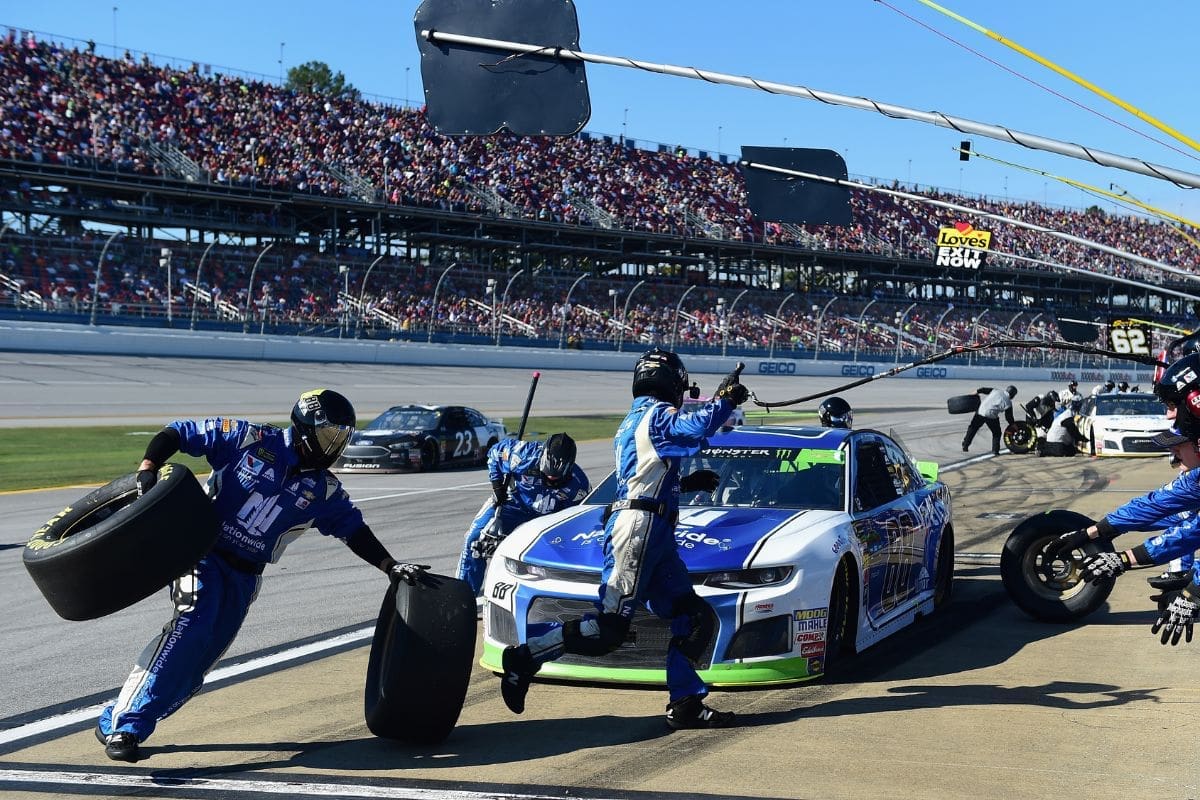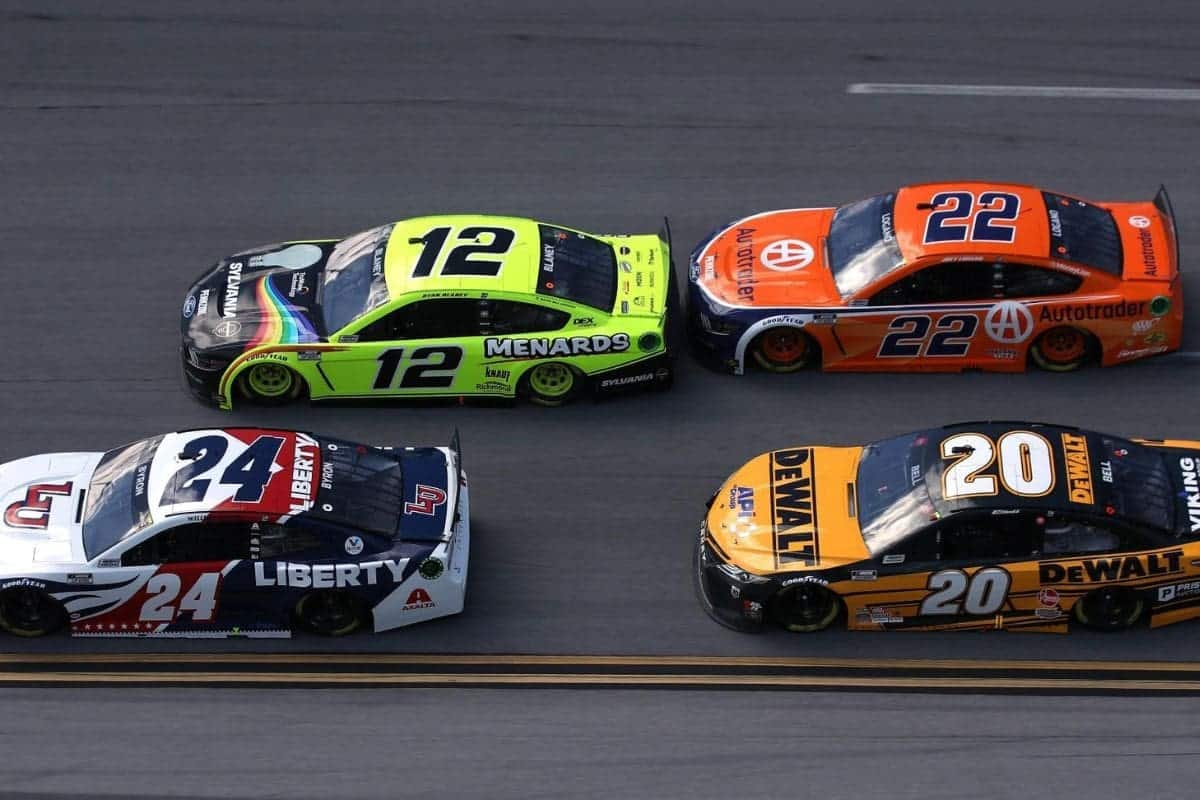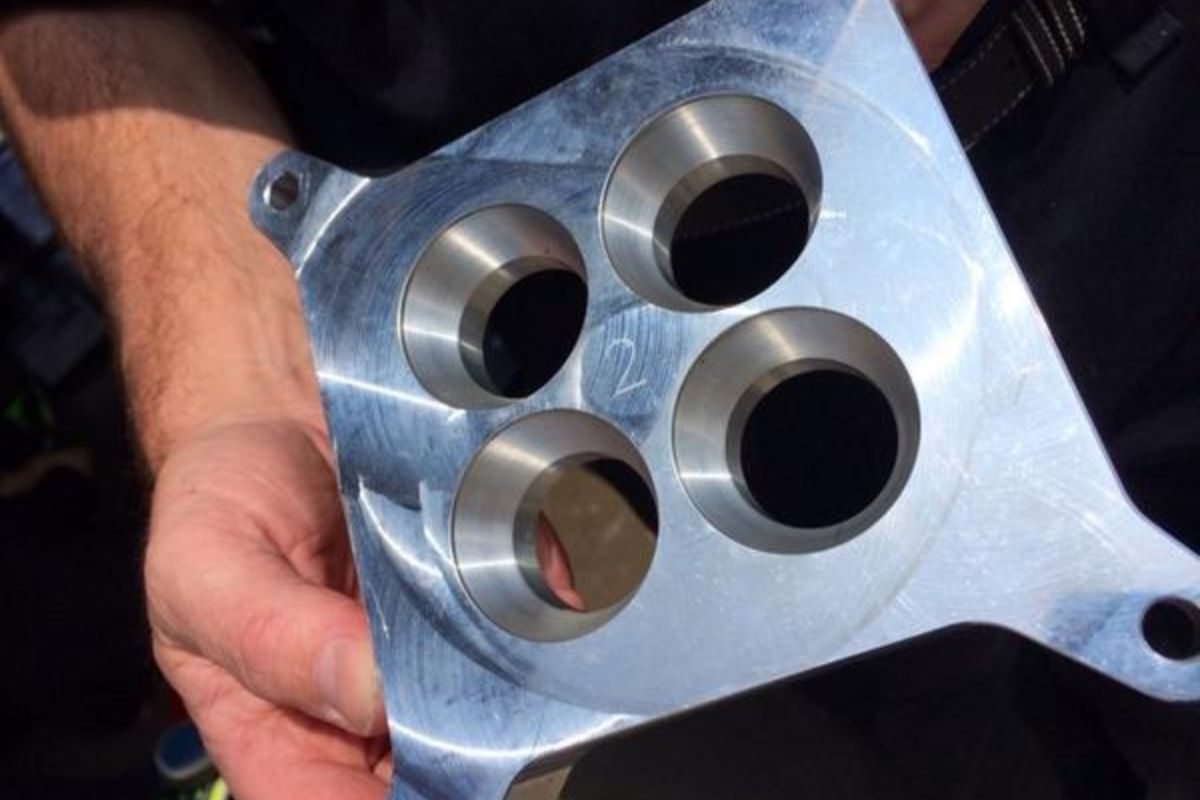NASCAR’s Tapered Spacer: In NASCAR, the integration of Tapered Spacer technology has emerged as an essential modification in engine performance management, vital for maintaining the delicate balance between speed, safety, and competition. By precisely regulating the volume of air entering the engine, tapered spacers play an integral role in controlling the power output of the vehicles, thereby ensuring a level playing field and mitigating the risks associated with excessive speeds.
Key Takeaways
- Tapered spacers control air intake, directly influencing engine power and throttle response in NASCAR vehicles.
- They replace restrictor plates, offering more precise airflow management and efficient power delivery.
- Spacers vary in size to adjust horsepower according to different track requirements, enhancing safety and competition.
- By standardizing engine performance, tapered spacers level the playing field, promoting fairness among teams.
- The technology enhances race dynamics by decreasing speed differentials, highlighting driver skill and strategic racing.
Tapered Spacers vs. Restrictor Plates
In NASCAR, the introduction of tapered spacers as an alternative to restrictor plates marked a significant shift in how engine power is managed to improve safety and competition. Historically, restrictor plates have been utilized primarily at superspeedway tracks to reduce the engine’s horsepower, thereby limiting the top speeds cars can reach. This method was deemed necessary following a series of high-speed crashes that raised concerns about the safety of drivers and spectators alike.
Restrictor plates achieve power reduction by limiting the flow of air and fuel into the engine’s combustion chamber, effectively capping the energy that can be generated. However, this approach can lead to abrupt power delivery and reduced throttle responsiveness, which in turn affects the overall drivability and race dynamics. Drivers often expressed that these plates made cars more challenging to handle, especially in tightly-packed racing conditions where throttle control is crucial.
The adoption of tapered spacers introduced a subtle method of airflow restriction. Unlike the flat restrictor plates, tapered spacers reduce engine power by constricting the air intake using a contoured design, which allows for a more gradual and controlled reduction of airflow. This innovation not only maintains a lower power output but also improves the predictability and smoothness of the power delivery. As a result, drivers can experience better throttle response and a more manageable acceleration curve, which are critical during high-stakes overtaking maneuvers and in maintaining stable speeds on the track.

Understanding Tapered Spacer Technology
Building on the shift from restrictor plates, tapered spacer technology plays a pivotal role in NASCAR by regulating engine performance across different tracks. This ingenious system, mounted atop the intake manifold, serves a paramount function in maintaining competitive integrity among different teams. As explained by Matt Moeller, an experienced engine tuner for the #10 car, the tapered spacer is an indispensable device issued by NASCAR to control the horsepower of the racing vehicles, ensuring a level playing field among competitors.
“mounted on top the intake manifold of the engine and its issued by NASCAR. And it controls the horsepower we have so everyone’s on a level playing field. The biggest difference we have is at Talladega, Atlanta and Daytona we run smaller sizes and actually lower the horsepower to about 510. Everywhere else we run about 670.”-Matt Moeller
The implementation of tapered spacers marks a significant evolution in engine regulation strategy, moving away from the older restrictor plate technology. The strategic placement and sizing of these spacers are critical as they directly influence the air intake and, consequently, the engine’s power output. In high-speed tracks like Talladega, Atlanta, and Daytona, smaller spacers are utilized to restrict the engine’s horsepower to approximately 510. This adjustment is vital for enhancing driver safety and promoting closer, more competitive racing. In contrast, at tracks where higher performance is manageable, the spacers allow for up to 670 horsepower, enabling the cars to reach more exhilarating speeds.

How Tapered Spacers Work
Tapered spacers function by adjusting the volume of air that enters the engine’s combustion chamber, directly influencing the vehicle’s power output. By modulating the airflow, these spacers play an important role in managing the engine’s complete performance dynamics. The design of the tapered spacer, featuring strategically shaped holes, allows for precise control over the air intake volume. This modification is vital for conforming to specific racing regulations and achieving desired performance characteristics.
The operation of tapered spacers is primarily based on the principle of air restriction. The size and shape of the holes in the spacer determine how much air can pass into the combustion chamber. A smaller hole size results in reduced air flow, which consequently lowers the engine’s power output. This setup is critical in environments where engine output needs to be controlled for safety, fairness, or technical reasons.
Benefits of Tapered Spacers for NASCAR Drivers
Tapered spacers offer NASCAR drivers with improved throttle control, important for maintaining high performance and safety during races. Unlike traditional restrictor plates, which indiscriminately limit engine power, tapered spacers allow for a more sophisticated management of air intake, giving drivers the ability to fine-tune their engine’s output according to the diverse demands of different tracks and racing conditions. This advanced control is critical not just for achieving best speeds but also for handling the strategic complexities of race tactics.
- Precision in Performance: Drivers can adjust their speed more accurately in response to the dynamic race environment. This precision helps in executing overtaking moves and in maintaining efficient lap times without overtaxing the engine.
- Increased Safety: With better control over the vehicle’s power output, drivers can avoid situations that may lead to loss of control and possible crashes. This is particularly important during cornering, where maintaining a stable and manageable speed is key.
- Adaptability Across Tracks: Tapered spacers adapt more effectively to different types of tracks, whether it’s the tight turns of a short track or the stretches of a superspeedway. This adaptability ensures that drivers can maintain competitive performance no matter the circuit.

Ensuring Fairness with Tapered Spacers
Maintaining fairness in NASCAR competitions, the uniform distribution of tapered spacers by a single source manufacturer plays a vital role in upholding a level playing field among drivers. This centralized distribution method guarantees that each car’s engine capabilities are standardized, preventing any individual team from gaining an unfair advantage through engine modifications that could improve performance beyond the established regulations.
The implementation of tapered spacers is a precise methodology aimed at controlling the power output of NASCAR vehicles. By reducing the amount of air and fuel mixture that can enter the engine, these spacers effectively limit horsepower, equalizing the potential speed of the cars. This power capping is not only important for fairness but also for the safety of the drivers, as it helps to manage the speeds at which the cars race.
News in Brief: NASCAR’s Tapered Spacer
NASCAR’s adoption of tapered spacer technology greatly improves the sport by ensuring competitive equity, enhancing safety, and promoting engaging racing. By carefully controlling engine power output through airflow regulation, this technology standardizes vehicle performance, thereby emphasizing driver skill and strategic expertise. Ultimately, tapered spacers not only uphold the integrity of NASCAR competitions but also contribute to the sport’s appeal and excitement, fostering a richer and more immersive spectator experience.
Our Reader’s Queries
Q. What does NASCAR use instead of restrictor plates?
A. NASCAR is transitioning to tapered spacers at every track to regulate speeds. No matter what you call it, you’re still restricting the airflow to the engine,” commented two-time Daytona 500 winner and 1988 NASCAR champion Bill Elliott. “It’s just a different approach, a different method.
ALSO READ: Inside NASCAR Tech Inspection: Unveiling the Hidden Secrets!

